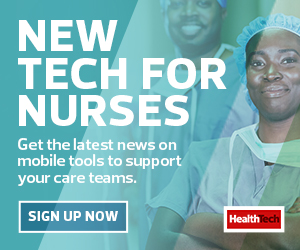Mobile Health Solutions Give Patients More Control over Their Care
While equipping physicians and staff with the latest technologies is critical for healthcare organizations to keep up, providers should also consider what they can do to outfit patients with the right solutions.
One such option is creating a mobile health app. These apps, which can be used with a patient’s own smartphone or tablet, are a cost-effective way for providers to boost engagement and encourage patients to track their own vital signs and symptoms.
With a growing population and a shortage of doctors and nurses in many areas — coupled with the demands of COVID-19 — the number of clinicians experiencing burnout is alarming. This small change could go a long way in reducing the number of unnecessary hospital visits and could free up physicians to focus on more critical cases.
Use Artificial Intelligence for Health Data Management and Safety
Artificial intelligence is ideal for capturing and storing large amounts of data, including patient data collected on mobile health apps, and helping healthcare providers analyze it.
AI holds the potential to reduce the number of unnecessary in-person doctor visits each year, the Accenture survey notes. That’s because AI can augment diagnoses — and even identify diseases based on facial features, retina scans, X-rays and speech, making it possible for patients to recognize and begin to diagnose their own symptoms before walking into a doctor’s office.
In addition to empowering patients, AI can be used to streamline manual processes and free up healthcare workers to spend more time at the bedside.
And as physicians start to use AI on a more regular basis, the technology can pick up on a user’s preferences, reducing the number of clicks and effort it takes to finish a task. This enables more accurate medical analysis and reduces the chance of human error.
READ MORE: Learn how AI can enhance medical diagnosis and treatment.
RFID Provides Real-Time Visibility of Health Devices
Another digital solution driving change in the healthcare industry is radio-frequency identification, or RFID. The solution provides critical real-time visibility into tagged assets, such as equipment or specimens, reducing the time spent looking for them.
Healthcare facilities are utilizing RFID to tag everything from patient wristbands to medications and even lifesaving equipment. In emergency situations, tagged inventory can make all the difference in a physician’s ability to quickly respond and treat patients.
Global tracking with mobile barcode readers and RFID provides operational, actionable data on the location and condition of vaccines and other perishable drugs. The technologies give pharmacists visibility into prescription stock without the need for manual data entry, and they show accurate dose-level data for all products.
This type of valuable transparency also helps with decommissioning expired or damaged inventory and accounting for uncollected medication.
Interoperable data collected on these technology platforms enables the free and secure flow of information to inform real-time decisions about health and is critical to ensuring the success of all efforts — no matter when or where care is delivered.











